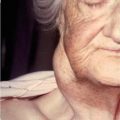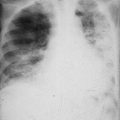and Karl Reinhard Aigner3
(1)
Department of Surgery, The University of Sydney, Mosman, NSW, Australia
(2)
The Royal Prince Alfred and Sydney Hospitals, Mosman, NSW, Australia
(3)
Department of Surgical Oncology, Medias Clinic Surgical Oncology, Burghausen, Germany
In this chapter you will learn about:
Evidence-based medicine
Clinical trials
23.1 Evidence-Based Medicine
Nowhere in the field of medical practice is the situation more uncertain than in some aspects of treating cancer.
It would be good to think that doctors would always know just what was the right thing to do about every health problem in different people under different circumstances, but the reality is that this is not the case. The evidence is not always available for deciding just what is best for each individual patient.
Nowhere in the field of medical practice is the situation more uncertain than in some aspects of treating cancer.
The objective of all doctors has always been to get the best evidence of the most effective management. However, the advent of computerised information with a variety of approaches in statistical and mathematical analysis and randomised studies made it appropriate to link new scientifically studied and mathematically confirmed clinical information under the group umbrella known as evidence–based medicine. This label distinguishes such evidence from information based on a “one off” experience, a collection of anecdotes, traditionally accepted beliefs, medical folklore, wishful thinking or grandmothers’ tales.
Nowadays the most acceptable evidence is based on randomised trials.
23.1.1 Randomised Trials
In a randomised trial, all patients referred to a specialised clinic with a problem that needs to be studied to discover the best method of care are invited to take part. There are strict ethical standards that must be observed in conducting randomised trials. Approval must be obtained, not only from the patients involved but from independent ethics committees.
The nature of the trial is fully explained to patients considered appropriate for the study, and if they agree, they are allocated randomly to one of two “test groups” over which the researchers have no control. In some special studies, there may be more than two test groups. The researchers have no control over which patients are allocated to each group. Patients in one of the two groups are treated by the best known available standard treatment, and patients in the other group are treated by the new technique under study that is believed may be a better method of treatment. Ideally, results are recorded “blind”, that is, by a third party who does not know what treatment each patient was given. Results of the two groups are compared, usually by an appropriate form of statistical analysis, to discover which was the better form of treatment. Such studies are known as randomised controlled studies and are stopped as soon as there is enough evidence that one method is better than the other. The better method is then usually recommended for all patients.
Although this is not the only way of finding convincing “evidence” of the best practice, it is usually regarded as the most persuasive.
23.1.2 Other Historic Methods of Gathering Evidence
Often traditionally or historically accepted practices just “grew” and became accepted without close analysis or criticism.
Much evidence accumulated over many years of medical practice has not been evaluated scientifically or statistically proven to give best clinical information.
In the past, doctors had to make decisions and introduce practices and concepts based on the best available evidence, but this was usually gathered from historical evidence or evidence learned by “trial and error”. Trial and error is based on the principle of trying not to repeat mistakes, or making least mistakes. This often masquerades as experience, but one way or another, inevitably by making some mistakes, new information was produced and progress was made.
Often traditionally or historically accepted practices just “grew” and became accepted without close analysis or criticism. The dominant medical or surgical teacher may have been skilled in practice but unskilled in critical analysis. Each practitioner’s own personal experience was often taken as convincing evidence without proper analysis or fair comparison with other evidence or under different circumstances. This type of a teacher’s belief, or of personal experience in a limited practice, is often referred to as “anecdotal evidence”. Although anecdotal evidence may well be true, there is no proof that the outcome will be consistent when used by different practitioners, in different circumstances, and for different patients.
However, there are some notable exceptions to the value of a “one off” experience.
Edward Jenner was so convinced that “immunisation” with the mild disease cowpox would give protection against the deadly and virulent small pox disease that he tested his belief on himself. He injected himself with cowpox and had a mild reaction. He later injected himself with small pox and did not get the disease. His belief was based on “anecdotal” observations and historic evidence. There was no scientifically proven information or randomised trial, yet vital medical progress was made. In fact Jenner’s discovery in 1796 has still not been proven by randomised trials.
Alexander Fleming, working in London in 1928, noticed that a mould growing on a culture stopped the growth of bacteria. Later, in 1940, an Australian, Dr Howard Florey, also working in Britain, showed that an extract of Fleming’s mould, called penicillin, could be used effectively and safely in people to kill bacteria causing infection in humans. So penicillin was discovered, and the era of present-day antibiotic treatment of bacterial infections began. Success of treatment of pneumonia and other infections with penicillin was so obvious that no randomised trial was ever initiated.
The approach of Edward Jenner, in using himself as a test case, is still occasionally used in testing strongly held beliefs in other areas of medicine.
In 1983, Dr Robin Warren and Dr Barry Marshal in Australia reported in Lancet their finding of a bacterium called the Helicobacter pylori which was present in the gastric mucosa of patients with gastric ulcers. They believed that rather than being a coincidental finding, it would be found to be a cause of gastric ulcers. To prove that this bacterium actually was a cause of gastric ulcers rather than an incidental finding, Dr Marshal and a friend swallowed cultures of the bacterium. Both contracted gastritis with vomiting and abdominal pain and underwent gastroscopic examination. Biopsies showed the organism in the inflamed gastric mucosa. This confirmed the association between H. pylori and gastritis, and subsequent epidemiological studies confirmed that without treatment, ulcers could develop in the inflamed gastric mucosa.
Stay updated, free articles. Join our Telegram channel

Full access? Get Clinical Tree







